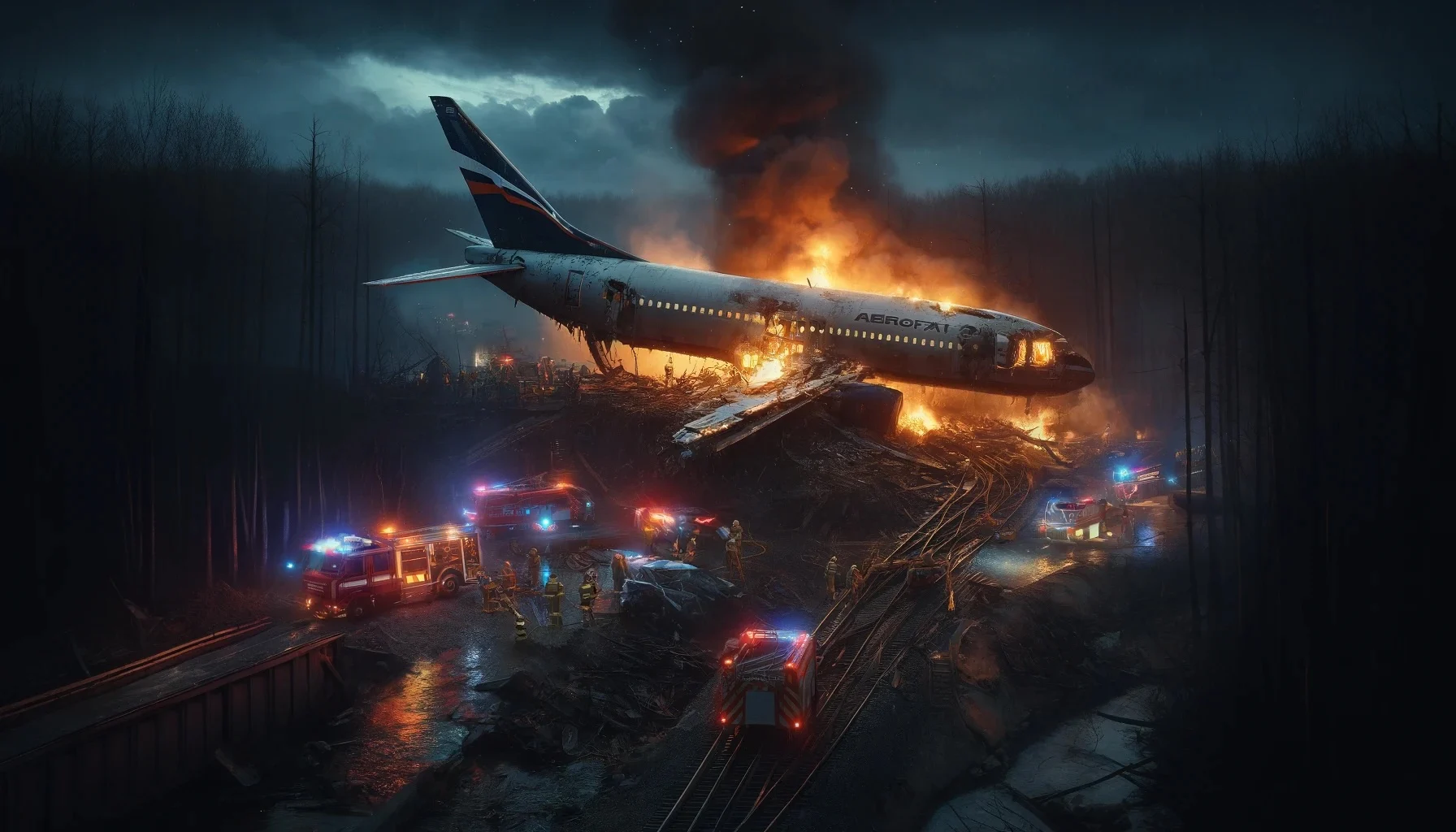
Aeroflot Flight 821
by: The Calamity Calendar Team
September 14, 2008
The passengers of Aeroflot Flight 821, aboard a Boeing 737-500, had no indication of the calamity that awaited them as they departed Sheremetyevo International Airport in Moscow. This flight, operated by Aeroflot-Nord, a subsidiary of the Russian national airline, was supposed to land safely in Perm, a city nestled in the Ural Mountains. But tragedy struck less than two hours later, plunging Russia’s aviation industry into a spiral of scrutiny.
At around 5:10 AM local time, the aircraft plummeted into a railway embankment just outside Perm, erupting into flames and killing all 82 passengers and six crew members instantly. The crash left the wreckage strewn across a smoldering landscape, igniting a fire that raged for hours. While the cause of the crash may have appeared mysterious at first, a deeper investigation would expose the disturbing reality behind the catastrophe.
The Fatal Descent
As the aircraft began its descent into Perm’s Bolshoye Savino Airport, the crew struggled with poor visibility, exacerbated by darkness and overcast skies. Compounding this, both pilots, Captain Rodion Medvedev and First Officer Rustem Allaberdin, were relatively inexperienced with the Boeing 737, a Western-manufactured aircraft with a vastly different control system compared to the Soviet-era planes they had been trained on.
Medvedev had 3,689 hours of total flight experience but only 452 hours on the Boeing 737. Allaberdin had fewer than 300 hours on this aircraft. Despite these statistics, the real problem lay in the pilots' understanding—or lack thereof—of how to handle the 737’s flight controls. The flight crew’s lack of familiarity with the plane’s autopilot system and other instruments played a critical role in what followed.
During the approach, Medvedev and Allaberdin became disoriented, a condition known as spatial disorientation, which occurs when pilots lose their perception of the aircraft's position relative to the ground. The captain disconnected the autopilot and flew manually, but without clear visibility, he struggled to maintain control. The aircraft eventually entered a steep right bank. Despite warnings from the onboard systems, the pilots were unable to recover, and Flight 821 spiraled into a nosedive.
Revelations from the Investigation
The Interstate Aviation Committee (MAK) led the investigation, revealing unsettling details. The pilots were not properly retrained on the Boeing 737, and their over-reliance on manual control, combined with a misunderstanding of the flight deck systems, caused the plane to veer out of control. Most shockingly, it was revealed that the captain had alcohol in his bloodstream at the time of the crash—a factor that further impaired his judgment and decision-making abilities.
Thanks for subscribing!
Additionally, the investigation highlighted communication failures between the pilots and air traffic controllers. Neither Medvedev nor Allaberdin spoke English proficiently, creating a dangerous language barrier in a high-stress situation. Miscommunication and confusion further delayed any potential recovery efforts in those final, critical minutes.
A Nation in Mourning
The aftermath of the crash sent shockwaves across Russia. The wreckage not only claimed the lives of Russian citizens but also included foreign nationals, including one Swiss and two Ukrainian passengers. The victims represented a broad cross-section of society, from children to business travelers, each with their own story tragically cut short.
The railway tracks damaged by the crash disrupted train services in the region, adding another layer of chaos to an already harrowing situation. Rescue workers and firefighters worked for hours to extinguish the flames and recover the remains of those on board.
Consequences and Reforms
In the wake of the disaster, Aeroflot-Nord, the airline operating the flight, faced intense criticism. The accident exposed the cracks in Russia’s aviation industry, particularly concerning pilot training and the oversight of regional airlines. Aeroflot moved quickly to rebrand Aeroflot-Nord as Nordavia to distance the parent company from the negative press.
Russian authorities also implemented stricter regulations on pilot training, specifically regarding Western-made aircraft like the Boeing 737. The crash underscored the importance of ensuring that flight crews are thoroughly trained and familiar with every system and procedure in the aircraft they operate. Moreover, language proficiency requirements were heightened to improve communication between pilots and air traffic controllers, a critical safety issue highlighted by the tragedy.
Lessons Learned
The crash of Aeroflot Flight 821 remains a poignant reminder of the devastating consequences of inadequate training, pilot fatigue, and disorientation. The lessons learned from this tragedy continue to shape aviation safety protocols, not only in Russia but across the globe. Improved training, stricter safety standards, and the adoption of more rigorous communication protocols have been key outcomes in an effort to prevent future disasters of this nature.
As one of Russia’s most tragic aviation accidents, the legacy of Flight 821 lives on through these reforms, ensuring that the mistakes made on that ill-fated flight are not repeated. The 88 lives lost that day stand as a solemn reminder of the importance of vigilance and the highest standards of safety in aviation.
Stay in the Loop!
Become a Calamity Insider and get exclusive Calamity Calendar updates delivered straight to your inbox.
Thanks! You're now subscribed.